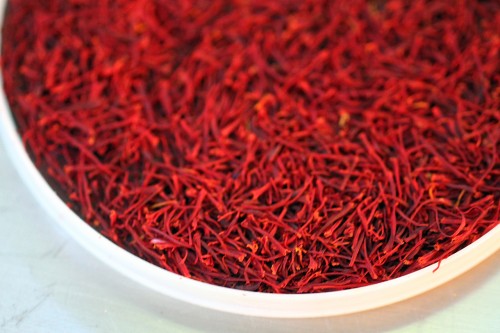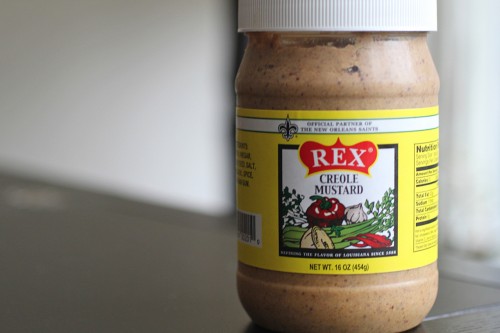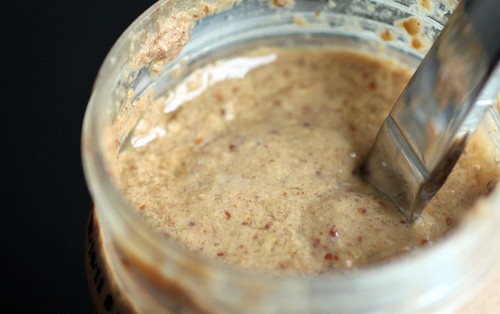Arroz Con Pato
A classic dish in Spanish and Latin culture is Arroz con Pollo or chicken with rice. It’s a family-style, one-pot dish, chicken cooked with onions, peppers, garlic, tomatoes (sofrito) and rice – some families add achiote, others saffron, cilantro, or culantro…whatever is that family’s tradition. One of the best dishes I tried in Peru was Arroz con Pato, where succulent duck replaces the chicken in the traditional dish. It was such a rich and elegant dish that I had to try my hand at it now that I’m back home in NYC. I’m so happy I did….
Two of the differences between arroz con pollo and arroz con pato (aside from the whole chicken v. duck thing) is that chicha, Peruvian corn beer, is used to cook the rice and duck in arroz con pato. Also, cilantro is blended with water and added to the braising liquid, so the color of the dish takes on a gorgeous, green hue. Beer, cilantro, and duck? A winning combination in my book!
I learned a number of dishes from a fantastic friend in Lima, Naguib Ciurlizza, a colorful and multi-talented gentleman who boasts poetry and painting as skills alongside his vast knowledge of Peruvian cuisine. He detailed to me how the original dish was made. I had to make a few twists and turns to accommodate what’s locally available here in the States (aji amarillo can be so difficult to find!) and to accommodate my own taste. So I use jalapenos in lieu of Peruvian peppers. I also substitute a good stout beer instead of corn beer and chicken stock instead of water. Traditionally, a long grain rice is used, but I went with a shorter grain rice that’s more of a paella tradition because I just love the texture. I also throw in some olives at the end for a salty bite.
I will be blunt – this is not something to be whipped up in 30 minutes. It’s a long, slow, loving cooking process, but I promise you the results are incredible and rewarding. Fall-off-the-bone duck meat in a flavorful rice infused with beer and cilantro, studded with peas, bell pepper, and olives. It’s a meal your family will love you for or that works for a great, casual dinner party (when you want to flex your Peruvian-inspired skills). I’m a cook, so I shouldn’t say this but…I was literally shocked by how delicious this version of the dish is! Enjoy!
Ingredients
Serves 4 to 6
Vegetable oil to coat pot
Duck, preferably 2 legs, bone-in with thigh meat and 1 breast, boneless split (approximately 3 lbs)
3 shallots, finely chopped
1 jalapeno, minced
2 tsps ground cumin
5 cloves garlic, minced
¾ cup stout beer
¼ cup Pisco liqueur (optional)
4 cups chicken stock
1 very large handful cilantro (no tough stems but soft stems are fine)
Bay leaf, dried or fresh
2 ½ cups Valencia, bomba or calasparra rice (paella rice)
¾ cup fresh or frozen peas
1 cup bell pepper, small dice (mixed yellow, red and orange)
Black olives (garnish)
Salt and freshly ground black pepper
Procedure
Preheat oven to 350° F.
Start by prepping the duck. Dry the legs and breast and trim of excess fat. I like to reserve this fat to melt down and keep for cooking in the future. Prick the legs all over with a fork (this will help the legs render the fat easier) and season all over with salt and freshly ground pepper. Score the skin on the breast in a criss-cross pattern (again for fat-rendering purposes) and set aside.
Heat a large pot or dutch oven over medium-low heat. Add vegetable oil to coat the bottom of the pot and prevent the duck from sticking. Add the legs skin-side down. You want the fat to render out and the skin to crisp and brown. This should take 3 to 4 minutes. Turn pieces over and cook for another 3 minutes. Remove legs to a plate and set aside. Pour off (and keep!) any excess fat, reserving a few tablespoons in the pot for cooking the vegetables.
Add shallots, minced jalapeno and cumin and cook for 3 to 5 minutes until the shallots are softened and translucent. Add the minced garlic and cook for another minute. Pour in the beer and pisco, if using, and increase the heat. Scrape the bottom of the pan with your spoon to dislodge any brown bits and bring up to boil.
While the duck or vegetables are cooking, blend 2 cups of the chicken stock in a blender with a large handful of the cilantro, reserving a small handful to chop for garnish later. You want to blend on high for several minutes until the cilantro is totally pulverized.
Nestle the duck legs back into the pot, skin-side up. Add the chicken stock blended with the cilantro and a bay leaf, cover and bring up to a boil. As soon as it boils, place covered pot into the oven and cook for 1½ hours.
Take pot out of the oven, place on the stovetop and temporarily (and carefully) remove the duck legs. Add the rice, peas, and chopped peppers and season very well with salt now to avoid stirring once it’s cooked. Add the remaining 2 cups of chicken stock, stir and nestle the duck thighs back in. Cover and bring back up to a boil. Place in the oven for another 30 to 40 minutes until the rice is cooked through.
In the last 10 minutes of cooking, heat a skillet over medium-low heat. Season scored duck breast all over with salt and freshly ground pepper. Add a touch of oil to prevent the duck breast from sticking and place breast pieces skin-side down. You want to render all of the fat out, so as the fat accumulates in the pan, carefully pour it off (and keep!). Cook for 8 to 10 minutes until the skin has become crisp and there is no layer of fat underneath it. Turn breast pieces over, increase heat to medium-high and cook for another 2 minutes. This will yield a medium-rare breast – cook for longer if you like your meat more well done.
Remove the duck breast to a cutting board, cover loosely with foil and let rest for 5 minutes. Thinly slice the duck breast.
Serve the rice garnished with black olives, some fresh cilantro and sliced duck breast.























































